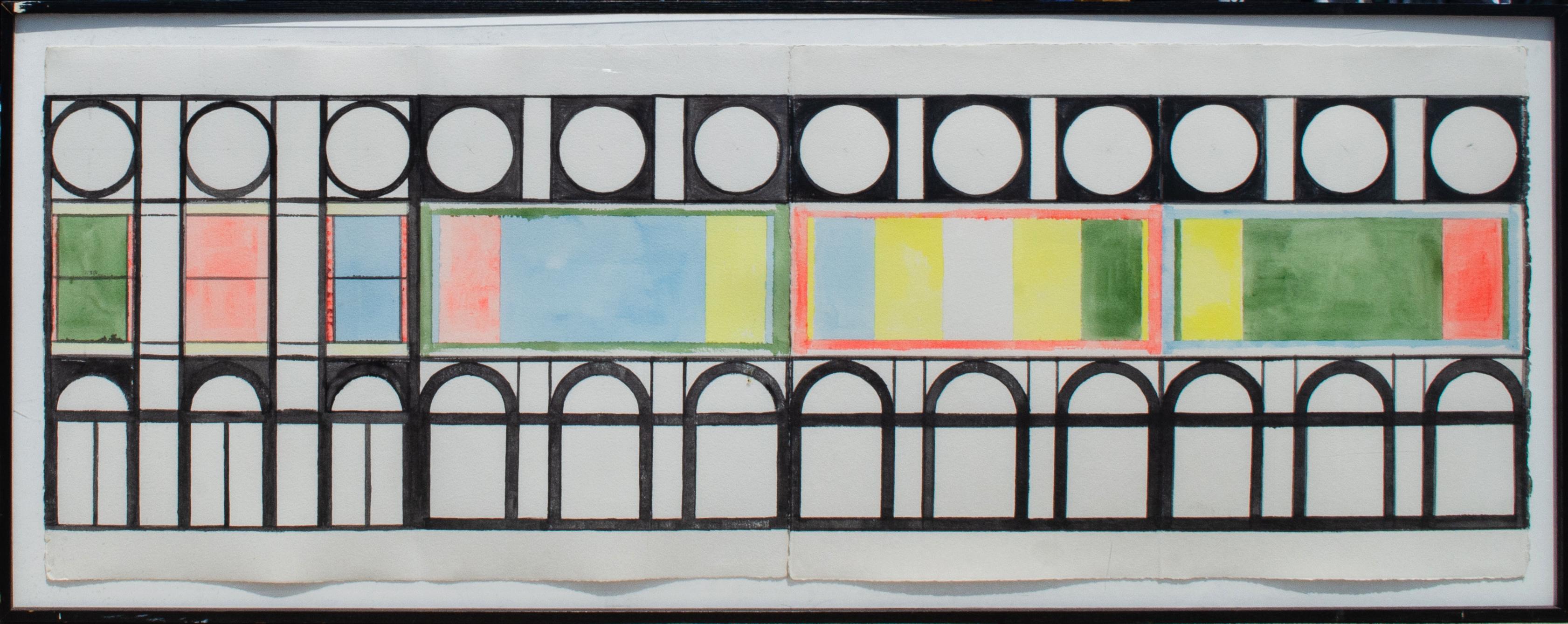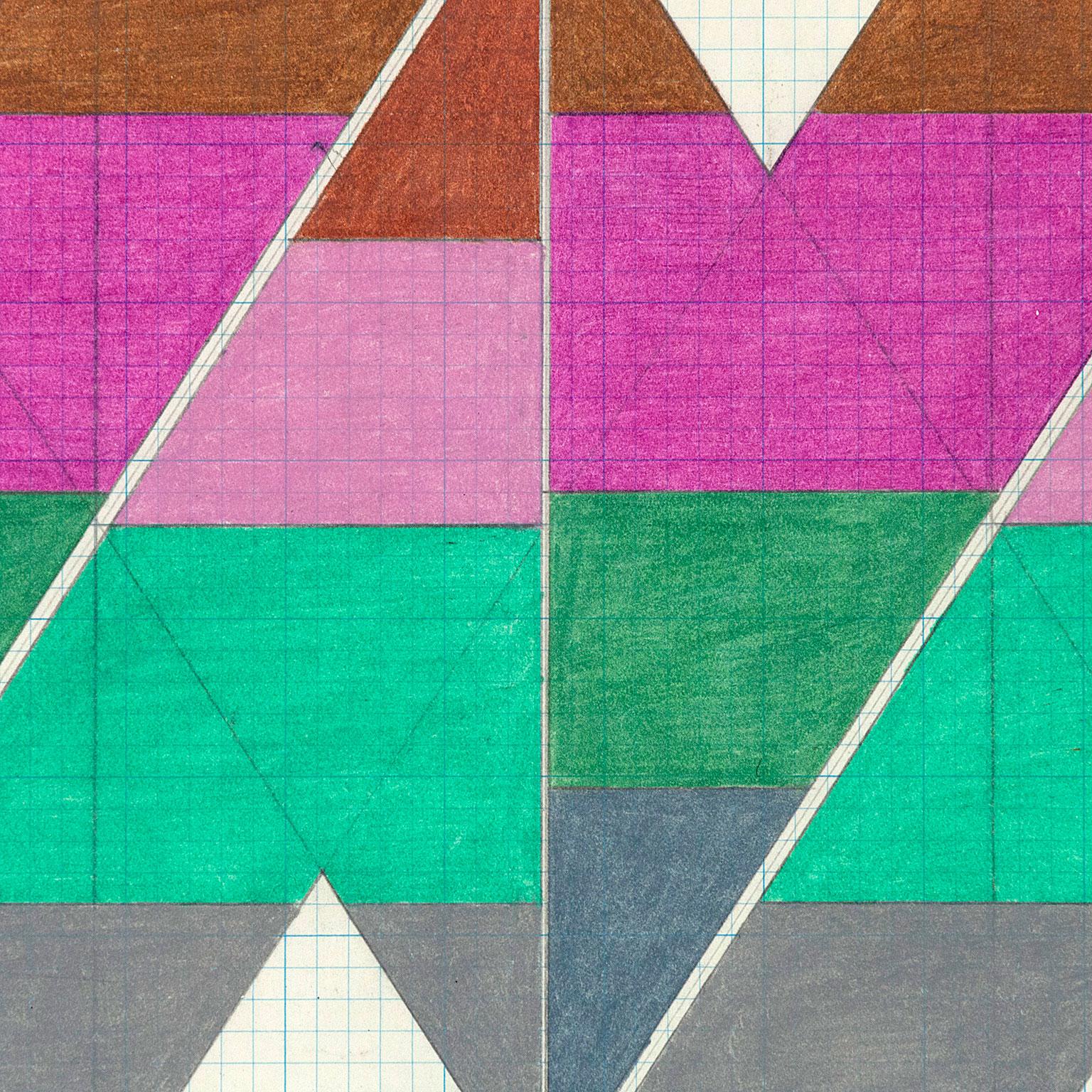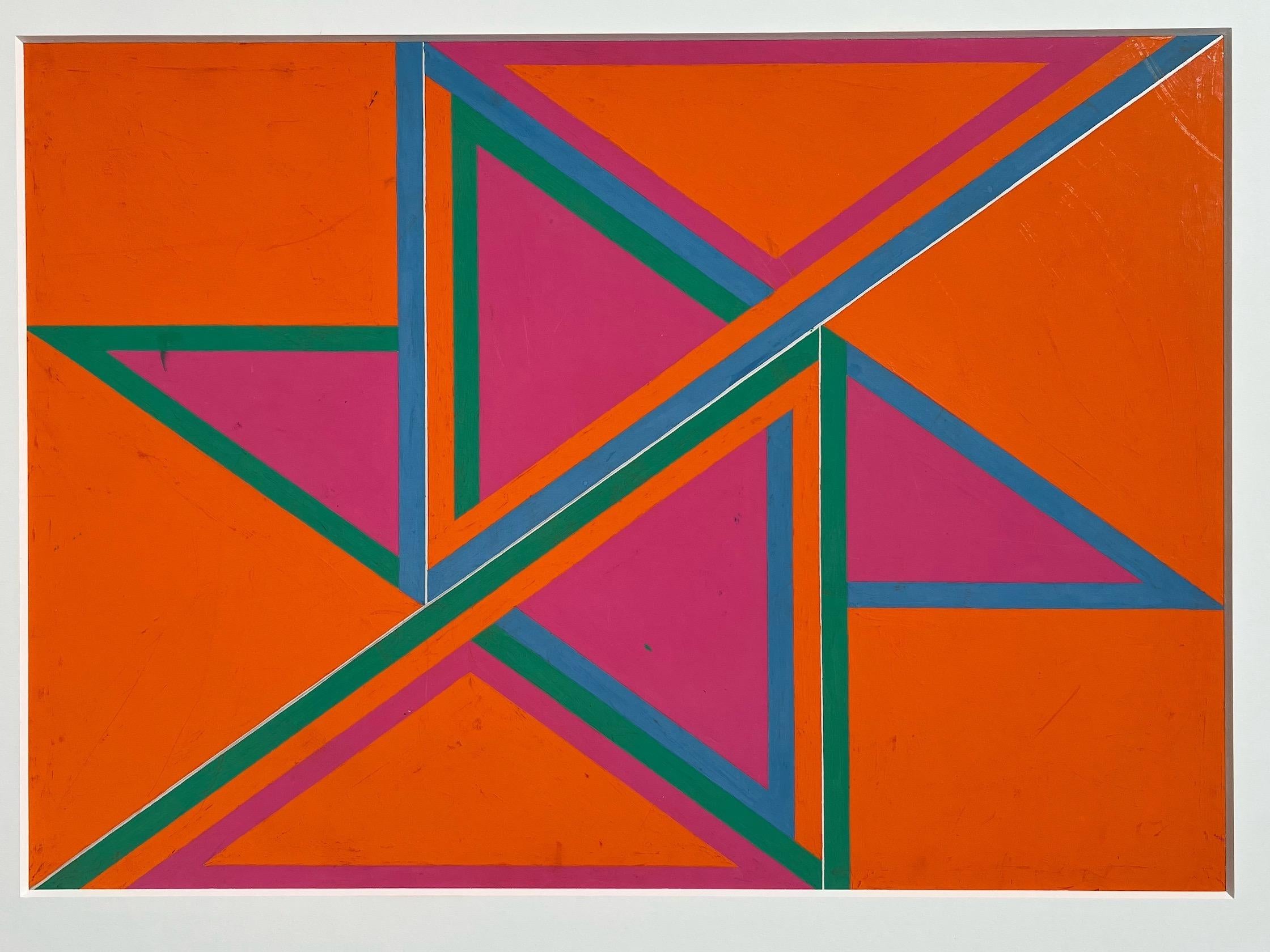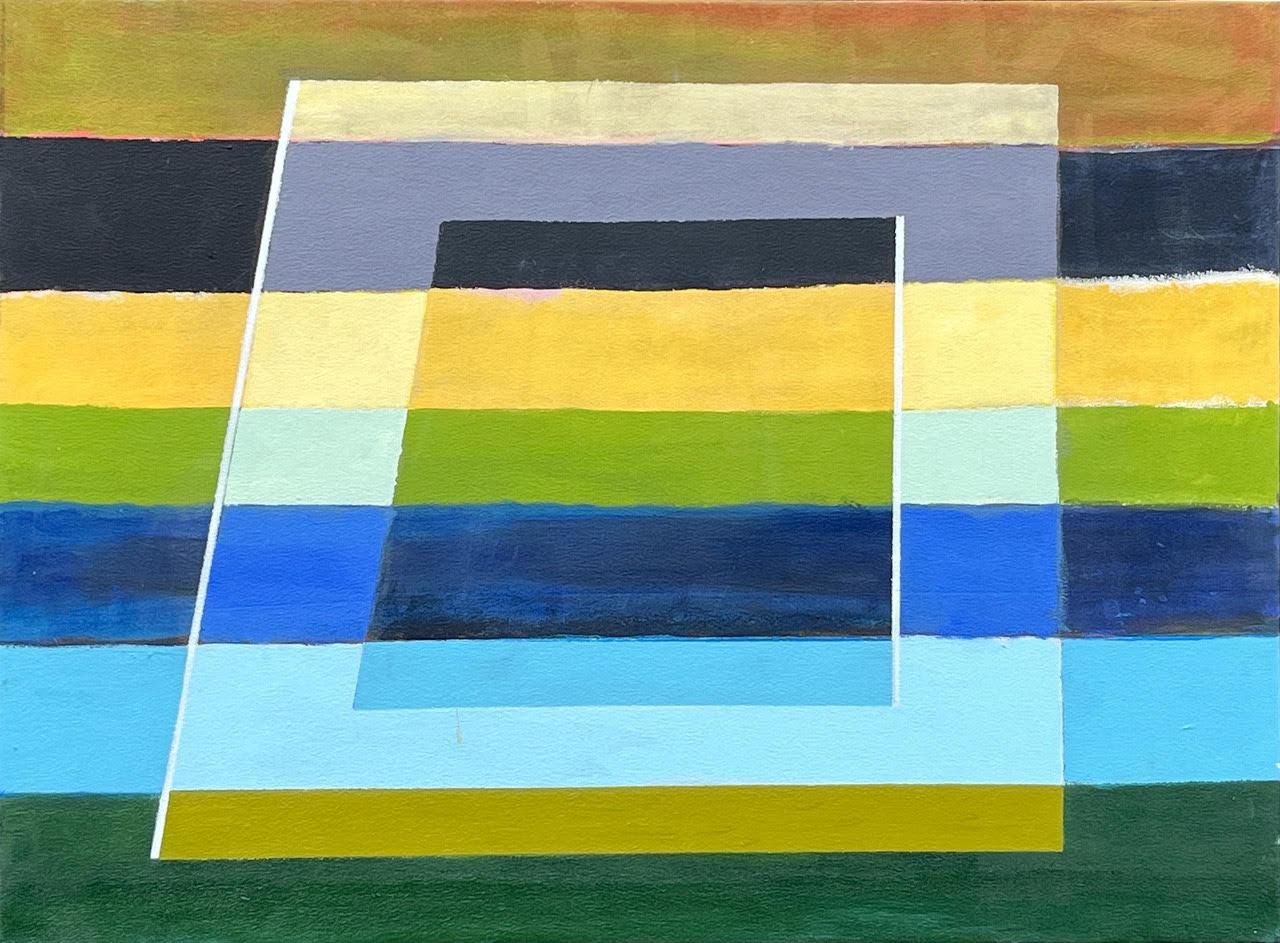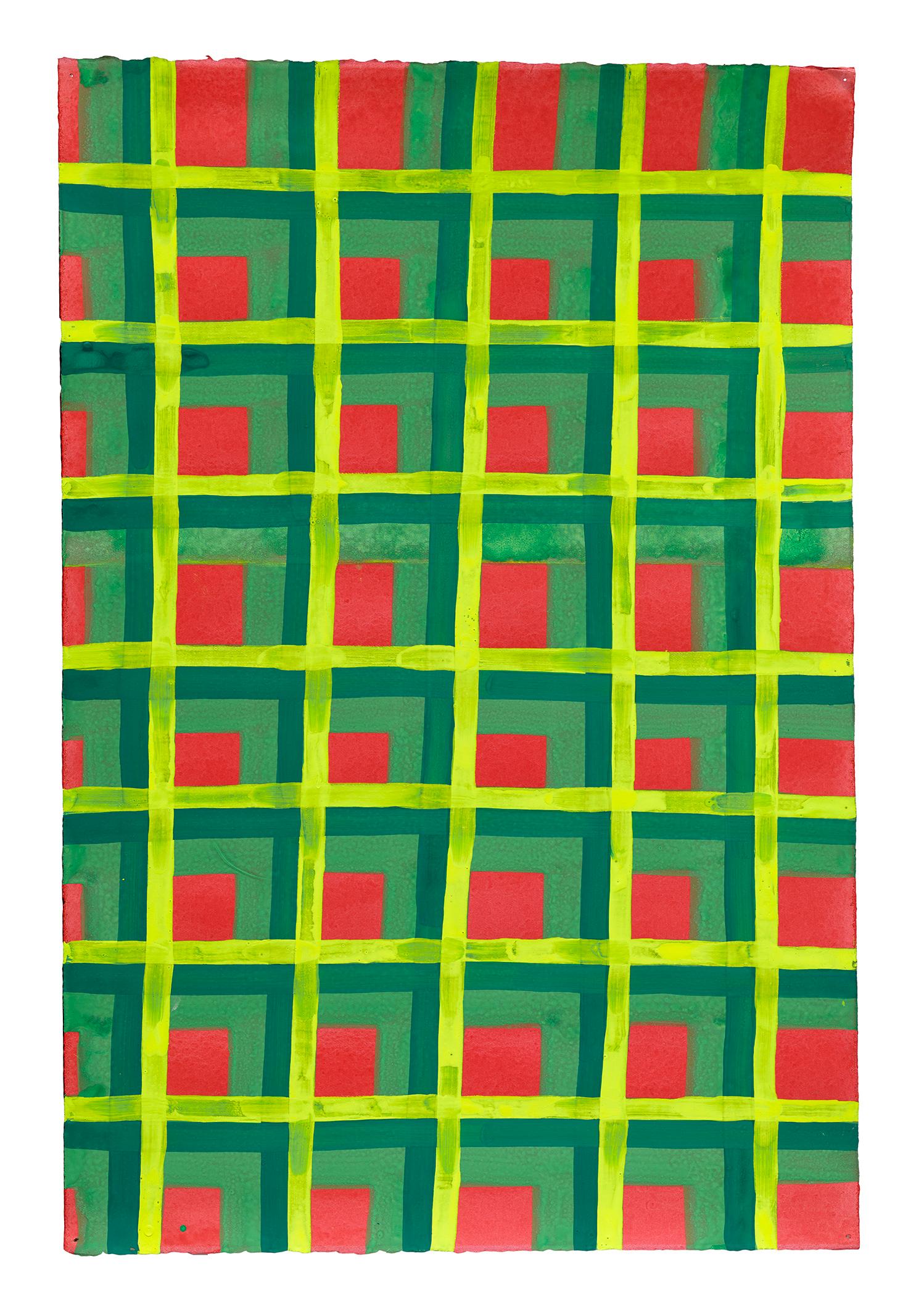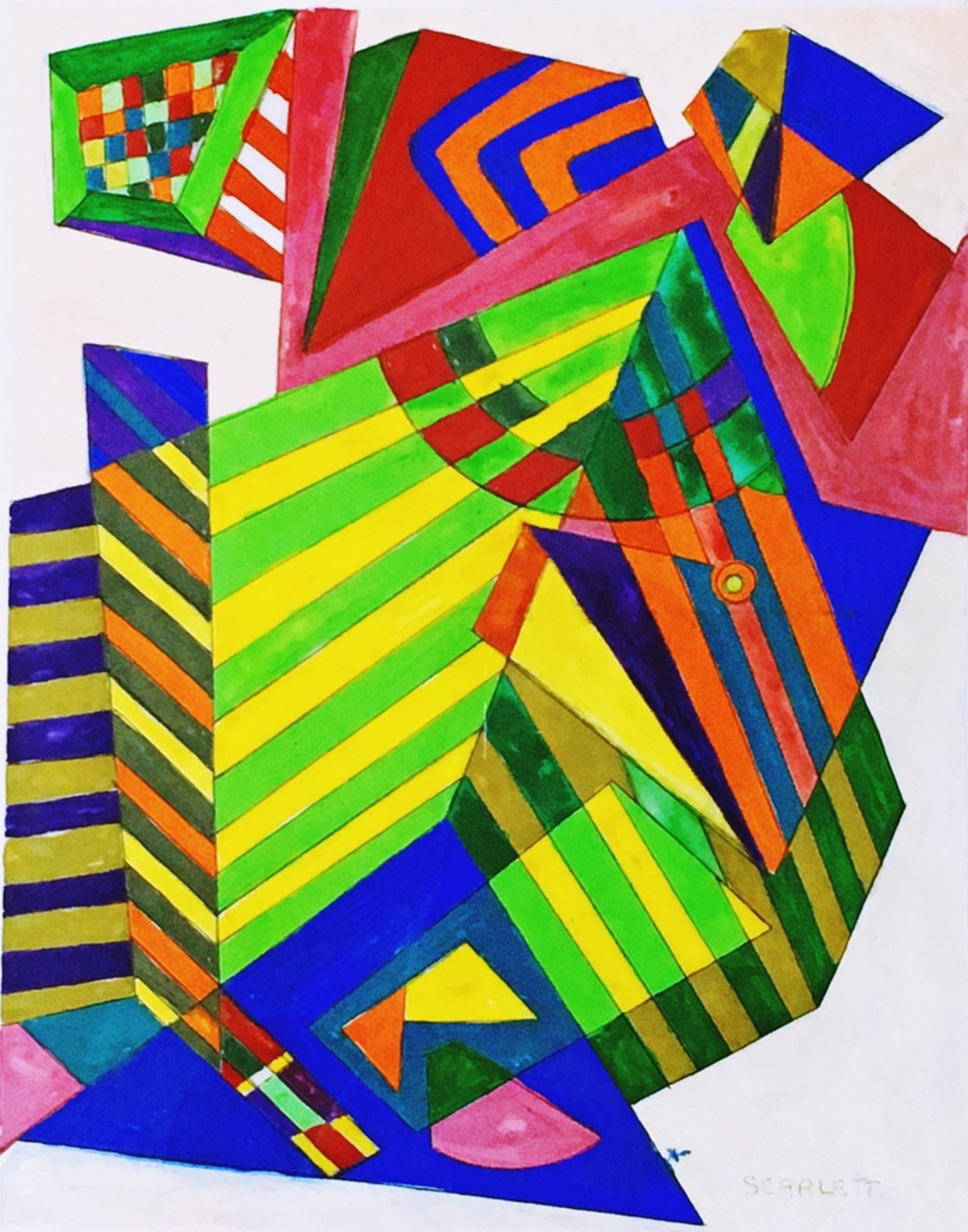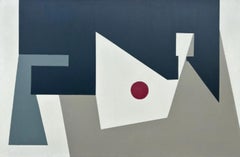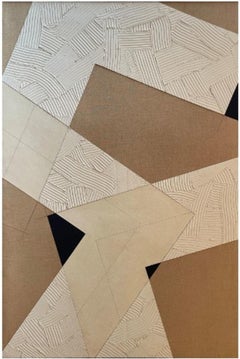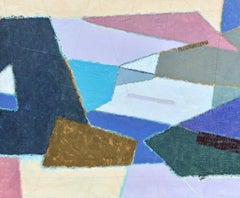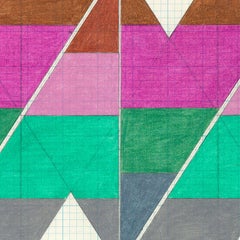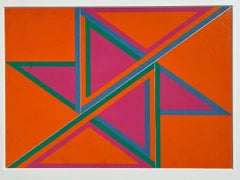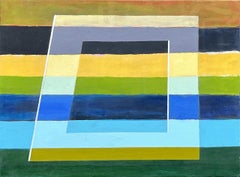Items Similar to "Untitled (Home Savings Study)" David Novros, 1986 Geometric Abstraction
Want more images or videos?
Request additional images or videos from the seller
1 of 7
David Novros"Untitled (Home Savings Study)" David Novros, 1986 Geometric Abstraction1986
1986
$37,500
£28,796.40
€33,034
CA$52,691.90
A$59,011.60
CHF 30,791.29
MX$720,801.36
NOK 391,754.78
SEK 369,275.83
DKK 246,528.71
About the Item
David Novros
Untitled (Home Savings Study), 1986
Watercolor on paper
30 x 84 inches (Two 30 x 42 inch sheets)
David Novros (b. 1941, Los Angeles, CA) is known for both his large, abstract paintings on irregularly shaped, multipartite canvases and also site-specific works that push beyond internal pictorial space to engage the surrounding architectural context. His work was first exhibited in a two-person show with Mark di Suvero in 1965 at the Park Place Gallery, and was included in the hugely influential Systemic Painting at the Solomon R. Guggenheim Museum, New York in 1966. His work has been exhibited in prominent venues, including the Museum of Modern Art, New York; the Museum of Contemporary Art, Chicago; the Whitney Museum of American Art, New York; the Los Angeles Museum of Contemporary Art; the Dallas Museum of Fine Art; and the Museum of Fine Arts, Houston. Novros’s works are owned by international institutions, with significant collections held at the Museum Wiesbaden, Germany, and the Menil Collection, Houston. In 2021, Novros’s immersive installation of painted rooms created for the 1975 exhibition Marden, Novros, Rothko: Painting in the Age of Actuality was reinstalled for the first time at the Moody Center for the Arts at Rice University, Houston, TX. Novros lives and works in New York City.
- Creator:David Novros (1941)
- Creation Year:1986
- Dimensions:Height: 30 in (76.2 cm)Width: 84 in (213.36 cm)
- More Editions & Sizes:Unique piecePrice: $37,500
- Medium:
- Movement & Style:
- Period:
- Condition:
- Gallery Location:New York, NY
- Reference Number:1stDibs: LU1841214781972
About the Seller
5.0
Platinum Seller
Premium sellers with a 4.7+ rating and 24-hour response times
Established in 2022
1stDibs seller since 2022
115 sales on 1stDibs
Typical response time: <1 hour
- ShippingRetrieving quote...Shipping from: New York, NY
- Return Policy
Authenticity Guarantee
In the unlikely event there’s an issue with an item’s authenticity, contact us within 1 year for a full refund. DetailsMoney-Back Guarantee
If your item is not as described, is damaged in transit, or does not arrive, contact us within 7 days for a full refund. Details24-Hour Cancellation
You have a 24-hour grace period in which to reconsider your purchase, with no questions asked.Vetted Professional Sellers
Our world-class sellers must adhere to strict standards for service and quality, maintaining the integrity of our listings.Price-Match Guarantee
If you find that a seller listed the same item for a lower price elsewhere, we’ll match it.Trusted Global Delivery
Our best-in-class carrier network provides specialized shipping options worldwide, including custom delivery.More From This Seller
View All"Composition" Balcomb Greene, Geometric Abstract, Early Modernist Composition
By Balcomb Greene
Located in New York, NY
Balcomb Greene
Composition, 1936
Signed Balcomb Greene on verso upper stretcher bar
Signed on backing board: Balcomb Greene
Oil on canvas
30 1/4 x 46 inches
Provenance:
The artist
A...
Category
1930s Abstract Abstract Paintings
Materials
Canvas, Oil
$36,000 Sale Price
20% Off
"Jean Jean" Larry Zox, Color Field, Geometric Abstraction, Hard-Edge, Yellow
By Larry Zox
Located in New York, NY
Larry Zox
Jean Jean, 1964
Signed, dated, and titled on the stretcher
Liquitex on canvas
58 x 62 inches
Provenance:
Solomon & Co., New York
Private Collection, NJ
Estate of the above, 2023
Committed to abstraction throughout his career, Larry Zox played a central role in the Color Field discourse of the 1960s and 1970s. His work of the time, consisting of brilliantly colored geometric shapes in dynamic juxtapositions, demonstrated that hard-edge painting was neither cold nor formalistic. He reused certain motifs, but he did so less to explore their aspects than to “get at the specific character and quality of each painting in and for itself,” as James Monte stated in his essay for Zox’s solo exhibition at the Whitney Museum of American Art in 1973. By the 1970s, Zox was using a freer, more emotive method, while maintaining the autonomy of color, which increasingly became more important to him than structure in his late years.
Zox began to receive attention in the 1960s, when he was included in several groundbreaking exhibitions of Color Field and Minimalist art, including Shape and Structure (1965), organized by Henry Geldzahler for the Gallery of Modern Art, New York, and Systemic Painting (1966), organized by Lawrence Alloway for the Guggenheim Museum. In 1973, the Whitney’s solo exhibition of Zox’s work gave recognition to his significance in the art scene of the preceding decade. In the following year, Zox was represented in the inaugural exhibition of the Hirshhorn Museum, which owns fourteen of his works.
Zox was born in Des Moines, Iowa. He attended the University of Oklahoma and Drake University. While studying at the Des Moines Art Center, he was mentored by George Grosz, who despite his own figurative approach encouraged Zox’s forays into abstraction. In 1958, Zox moved to New York, joining the downtown art scene. His studio on 20th Street became a gathering place for artists, jazz musicians, bikers, and boxers. He occasionally sparred with the visiting fighters. He later established a studio in East Hampton, where he painted and fished including using a helicopter to spot fish.
In the 1950s and early 1960s, Zox’s works were collages consisting of painted pieces of paper stapled onto sheets of plywood. He then produced paintings that were illusions of collages, including both torn- and trued-edged forms, to which he added a wide range of intense hues that created ambiguous surfaces. Next, he omitted the collage aspect of his work and applied flat color areas to create more complete statements of pure color and shape.
From 1962 to 1965, he produced his Rotation Series, at first creating plywood and Plexiglas reliefs, which turned squares into dynamic polygons. He used these shapes in his paintings as well, employing white as a foil between colors to produce negative spaces that suggest that the colored shapes had only been cut out and laid down instead of painted. The New York Times noted in 1964: “The artist is hip, cool, adventurous, not content to stay with the mere exercise of sensibility that one sees in smaller works.”
In 1965, he began the Scissors Jack...
Category
1960s Abstract Geometric Abstract Paintings
Materials
Canvas, Acrylic
$64,000 Sale Price
20% Off
"Villa Adrienne #17" Georges Noel, Constructivist, Architectural
By Georges Noel
Located in New York, NY
Georges Noel
Villa Adrienne #17, 1976
Graphite, pigment, sand, and vinyl binder on canvas
Signed to verso
76 3/4 x 51 inches
The Pace Gallery label to verso
With restless strokes ...
Category
1970s Assemblage Mixed Media
Materials
Canvas, Vinyl, Graphite, Pigment
$23,200 Sale Price
20% Off
"Untitled" James Suzuki, Abstract Color Field Composition, Mid-Century
By James Suzuki
Located in New York, NY
James Suzuki
Untitled, circa 1960
Signed lower right "Suzuki"
Acrylic on canvas
66 1/4 x 80 inches
Provenance:
Private Collection, New Jersey
James Hiroshi Suzuki...
Category
1960s Color-Field Abstract Paintings
Materials
Canvas, Oil
"Postcard Geometry" Mary Abbott, Geometric Abstract Crayon on Paper Composition
By Mary Abbott
Located in New York, NY
Mary Abbott
Postcard Geometry
Signed lower right
Crayon on paper
4 x 5 1/2 inches
Among the early exponents of Abstract Expressionism, Mary Abbott created powerful oil paintings in...
Category
Mid-20th Century Abstract Expressionist Abstract Paintings
Materials
Paper, Crayon
"Notes I" Calvert Coggeshall, Abstract Expressionism Hard-edge Vertical Stripes
Located in New York, NY
Calvert Coggeshall
Notes I, 1970-80
Signed, titled, and dated on the reverse
Acrylic on canvas
65 x 67 inches
Calvert Coggeshall worked as an abstr...
Category
1970s Abstract Expressionist Abstract Paintings
Materials
Canvas, Acrylic
You May Also Like
Geometric Watercolor by David Novros, California School
Located in New York, NY
David Novros (American, b. 1941)
Untitled (Home Savings Study), 1986
Watercolor on paper
Framed: 35 1/4 x 86 3/4 x 1 3/4 in.
Each panel: 30 x 42 in.
From Los Angeles and working fro...
Category
1980s Minimalist Abstract Drawings and Watercolors
Materials
Paper, Watercolor
Larry Zox "Meta Center" Drawing, 1965
By Larry Zox
Located in Toronto, Ontario
Larry Zox (1937-2006) was a central figure in the evolution of 20th century abstraction in America.
Raised in Des Moines, Iowa, Zox studied at the University of Oklahoma and went o...
Category
1960s Abstract Geometric Abstract Drawings and Watercolors
Materials
Paper, Mixed Media
Composition No. 7, Abstract Geometric Composition by David Leverett
By David Leverett
Located in London, GB
A dynamic interplay of vivid colour and bold geometry, this striking abstract painting by David Leverett exemplifies his signature fusion of movement and structure. This composition ...
Category
Late 20th Century Abstract Geometric Abstract Paintings
Materials
Gouache, Cardboard, Pencil
Stripes & Shape #8, Stripes & Shape Series, Abstract Geometric Painting
By Robert Petrick
Located in Los Angeles, CA
Painting description: This is a new piece from my ongoing series, "Stripes & Shape".
My attempt is to combine two elements in a non objective format. Impressions of overlapping trans...
Category
21st Century and Contemporary Abstract Geometric Abstract Paintings
Materials
Canvas, Acrylic
Untitled
By Jack Davidson
Located in Houston, TX
Jack Davidson
Untitled, 2008
Gouache on paper
22.5 x 15 in (57.2 x 38.1 cm)
JPHB 5682
Category
21st Century and Contemporary Abstract Geometric Abstract Drawings and W...
Materials
Paper, Gouache
Untitled Mid-Century Modern Geometric Abstraction
By Rolph Scarlett
Located in New York, NY
Rolph Scarlett
Untitled Mid-Century Modern Geometric Abstraction, ca. 1950
Gouache on paper painting
Hand signed on lower right front
This is a stunning original, signed vintage 1950...
Category
Mid-20th Century Abstract Geometric Abstract Paintings
Materials
Gouache, Mixed Media, Pencil
More Ways To Browse
Robert Coin
Cream And Brown Abstract Art
Ibiza Painting
Hawaiian Table
W Miller Oil Painting
Chinese 17th Century Painting
Jane West
1960s Color Block Painting
A Hoffmann Painting
El Mac
Christinas World
Dinner Party Art
Stephen Kinder
Large Rectangle Paintings
Maine Glass
Modern Tiger Painting
The Dinner Party
Guatemala Paintings
